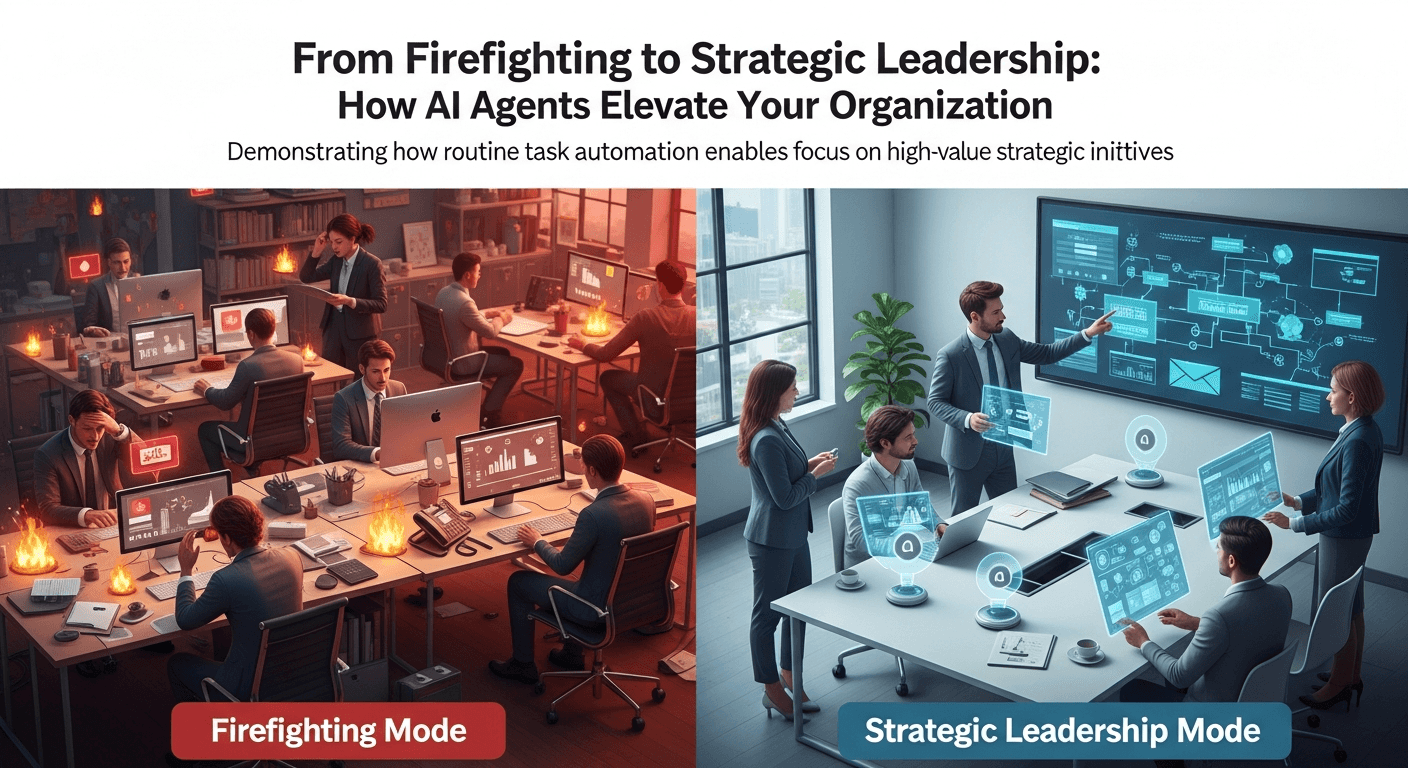Tuesday, 28 Oct 2025
|Low-Code AI Platforms: Non-Technical Logistics Agent Deployment

Introduction: Empowering Operations Teams with Accessible AI
Traditional AI development in logistics requires specialized coders and lengthy timelines, bottlenecking innovation and leaving operations teams dependent on IT queues that delay deployments by 3-6 months. Low-code AI agent platforms revolutionize this by enabling non-technical staff—such as warehouse managers or freight coordinators—to create and deploy intelligent agents for tasks like inventory alerts or route suggestions without programming expertise. These platforms use visual interfaces, pre-built templates, and drag-and-drop logic to democratize AI, accelerating adoption across logistics operations and yielding 30-50% faster problem-solving.
For operations leaders, VPs of logistics, and team supervisors, this shift reduces IT dependencies, fosters ownership, and scales intelligence to frontline needs, driving efficiency in high-volume environments. This guide explores the mechanics of low-code platforms, their logistics-specific applications, implementation strategies, and proven outcomes, providing a blueprint for seamless integration and measurable gains. As e-commerce demands surge, empowering non-technical teams with AI agents is key to agile, responsive supply chains.
Challenges of Traditional AI in Logistics Operations
Conventional AI implementation demands deep coding knowledge, custom model training, and rigorous testing, creating barriers for operations staff who understand logistics pain points best but lack development skills. This IT-centric model results in misaligned agents—e.g., a routing tool ignoring real-world constraints like driver preferences—leading to 40% adoption resistance from end-users. Dependencies on scarce data scientists extend timelines, with projects often exceeding budgets by 25% due to iterative fixes.
In fast-paced logistics, delays mean missed opportunities, such as unoptimized loads during peak seasons, amplifying costs in areas like fuel or labor. Non-technical teams feel disempowered, relying on generic solutions that fail to capture domain nuances like seasonal SKU variations. Low-code platforms address these by abstracting complexity, allowing operations experts to build tailored agents directly.
The Power of Low-Code Platforms: Accessibility Meets Intelligence
Low-code AI platforms lower the entry barrier with intuitive builders where users define agent behaviors via natural language or visual flows, such as "Alert on low stock for high-velocity items". These tools integrate ML libraries behind the scenes, auto-generating code for predictive tasks without manual scripting, enabling deployments in days rather than months. For logistics, this means operations teams can prototype agents for WMS alerts or TMS integrations using point-and-click interfaces.
Collaboration features allow real-time feedback loops between users and IT, ensuring governance without stifling creativity. Platforms like these support modular agents that scale from simple automations to complex multi-agent swarms, all managed via dashboards. The result is democratized innovation, where frontline insights directly shape AI, boosting accuracy by 35% over top-down approaches.
Core Features Enabling Non-Technical Deployment
Visual workflow designers let users connect data sources—like ERP feeds—to AI actions, such as auto-reordering via drag-and-drop nodes. Pre-trained models for logistics scenarios, including demand forecasting or anomaly detection, require minimal configuration. No-code APIs handle integrations with tools like Shopify or SAP, pulling shipment data for agent decisions.
Testing sandboxes simulate operations environments, validating agents on historical data before live rollout. Built-in analytics track performance, allowing non-tech users to refine agents iteratively with simple A/B tweaks. Security presets ensure compliance, embedding access controls without custom code.
Logistics-Specific Customizations
Tailored templates address common use cases: warehouse agents for pick-path optimization or delivery agents for ETA predictions. Integration with IoT sensors enables real-time inputs, like monitoring pallet temps for perishables. Voice and mobile interfaces empower field teams to deploy agents on-the-go, such as drivers adjusting routes via app.
Scalability features auto-provision resources during surges, handling 10x order volumes seamlessly. Community libraries share logistics blueprints, accelerating setup for SMEs.
Implementation Strategies: From Concept to Operations
Start with a needs assessment: Engage operations teams to identify high-impact areas, like reducing manual email triage, using platform demos for quick validation. Phase 1 (Weeks 1-2): Train staff via interactive tutorials, building simple agents like stock notifications. Phase 2 (Weeks 3-4): Integrate with core systems, testing in pilots for one department.
Govern with lightweight policies: IT approves templates while teams customize logic. Monitor via dashboards, iterating based on KPIs like task completion rates. Scale enterprise-wide by standardizing libraries, achieving full rollout in 8-12 weeks.
Overcoming Adoption Hurdles
Address skepticism with success showcases: Demonstrate ROI from pilot agents, like 25% faster fulfillment. Provide ongoing support through in-app help and peer forums. Measure cultural shifts via surveys, refining training for sustained engagement.
ROI and Success Stories: Low-Code in Action
Low-code deployments deliver 4-7x ROI through 50% reduced development time and 30% efficiency lifts, with costs starting at $10K annually for small teams. A 3PL used low-code agents for claims processing, cutting resolution time by 60% and saving $1.5M yearly. Another operations team built custom routing agents, improving on-time rates by 22% without IT involvement.
These cases show how empowering non-technical staff amplifies AI value, fostering innovation across distributed logistics networks.
Explore More on Debales.ai
- No-Code AI Solutions for Small Logistics Companies: Democratizing Automation
- How Logistics Teams Can Effortlessly Leverage AI Without Technical Expertise
- Configurable Workflows in Minutes: Non-Developer Setup of Email Automation Rules
- Beyond ERP: AI Agents Supply Chain Automation
- Multi-Agent Orchestration: Autonomous Collaboration in Supply Chains
Democratize AI in Your Operations Today
Unlock the power of low-code AI for your teams. Contact Debales.ai to explore platforms that put intelligence in operations' hands.
Conclusion: The Future of Democratized Logistics AI
Low-code AI agent platforms transform operations by enabling non-technical staff to deploy tailored intelligence, reducing dependencies and accelerating value in logistics. This democratization drives agility, efficiency, and innovation, positioning teams to thrive in dynamic supply chains. Embrace low-code now to empower your operations fully.
All blog posts
View All →
Friday, 31 Oct 2025
AI Skills Gap: Make-or-Buy Analysis for Logistics Talent and Partnerships
Address the AI skills gap in logistics: Make-or-buy strategies for internal training, talent acquisition, and tech partnerships to build capabilities efficiently.

Friday, 31 Oct 2025
AI Agents: From Firefighting to Strategic Leadership in Logistics
Discover how AI agents automate routines to elevate organizations: Shift from reactive firefighting to high-value strategic initiatives in logistics.

Friday, 31 Oct 2025
AI Logistics Talent Strategy: Essential Skills for Data Literacy, AI Management
Develop critical talent for AI-driven logistics: Strategies for data literacy, AI system management, strategic decision-making to optimize organizations.